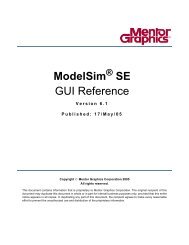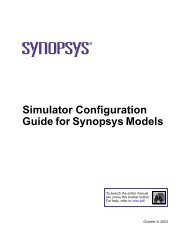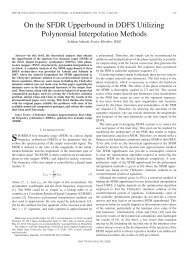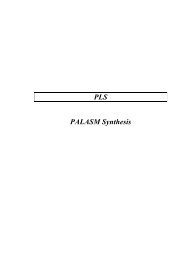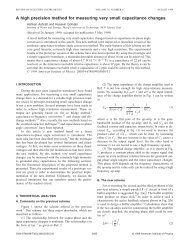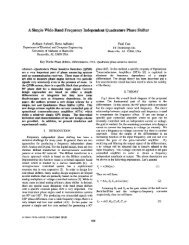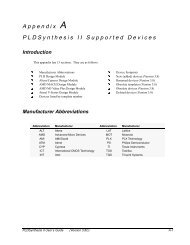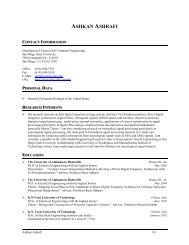Virtex-à¸â6 ML605 Development Board with 4-à¸âDSP FMC-à¸â150 ...
Virtex-à¸â6 ML605 Development Board with 4-à¸âDSP FMC-à¸â150 ...
Virtex-à¸â6 ML605 Development Board with 4-à¸âDSP FMC-à¸â150 ...
- No tags were found...
Create successful ePaper yourself
Turn your PDF publications into a flip-book with our unique Google optimized e-Paper software.
8. Select UNIT: 0 from the left-‐most pane and double click VIO Console (As shown in Figure 12). 9. Select ADC channel A iDelay from the VIO console, type 25 and hit enter (If you intend to use Chanel B of the ADC then it should set to the same value). Note: The connection between the ADC and DAC <strong>with</strong>in the FPGA is not registered making setup and hold times more critical. The setup and hold times cannot be maintained <strong>with</strong>in the FPGA at the sampling frequency used in this tutorial. The iDelay (Incremental Delay) adds a sub-‐clock period delay to the clock at critical points allowing the setup and hold times to be maintained. Without this you will essentially see noise being output by the DAC. Figure 12 – VIO Console <strong>with</strong>in ChipScope Pro window. 10. Check the dipswitches and ensure the four green LED’s numbed 5-‐8 are illuminated (As shown in Figure 13). The green LEDs indicate the clocks on the <strong>FMC</strong>-‐150 and FPGA are phase-‐locked; this is critical. The LEDs are indicative of the proper functional behavior of the connection between the <strong>ML605</strong> and <strong>FMC</strong>-‐150 . Figure 13 – LEDs 5-‐8 must be illuminated and indicate the clocks on the <strong>FMC</strong>-‐150 and <strong>ML605</strong> are phase-‐locked. 17



